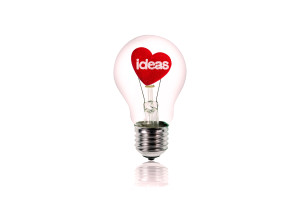OCTOBER 21, 2015
When you’ve done product design for decades, you start to see companies making the same product design mistakes again and again. These product design mistakes can lead to costly overruns, a product that consumers don’t want, and negatively impact the bottom line. At Bullseye Design Worx, we follow a tried-and-true product design process that’s specifically designed to help companies avoid the typical product design mistakes, and actually develop a successful new product that helps their business thrive. With that in mind, Bullseye Design Worx highlights the top 5 product design mistakes & how to fix them, based on 20+ years of experience in product design.
Product Design Mistake # 1:
Designing a new product without knowing what the customer or end user wants or needs
It’s surprising how often companies embark on new product design without knowing this fundamental information, and this happens both in start-ups and large, established businesses as well. Failing to determine what the customer or end user wants before developing a new product is most common in established companies that have been designing the same products over an extended period or that produce commodity-type products. Why? Companies that have been developing a category of products over many years often keep passing the same product design knowledge down to the next version of a product. It’s easy to assume you know what a customer wants when you’ve been making a line of products for years…but, as we all hopefully know, assumptions are dangerous and often costly.
The Solution:
The solution to this mistake is to find out what people really want or need in a new product BEFORE you design and produce the new product. A combination of properly worded product user surveys, video-recorded observation, and ethnographic research are recommended. Here’s a look at these three ways to gain the insights you need to design a new product that customers will actually want and buy:
 1) New Product User Survey: New product end user surveys can help the new product development team rank the priority of features that users deem most important. This helps focus new product development efforts in the right areas. It is amazing how we find that the “logical” features deemed most important by the development team often aren’t even in the top five rankings from customers and end users. For example, we were involved in the development of a new gas powered leaf blower, and the new product development team was focused on one main selling feature that competing companies were pushing: wind speed in miles per hour. Extensive work also was going into the ergonomics and comfort of the product but no one had talked to actual users of the product. The new product development team had simply used other competitor’s products and determined which leaf blowers were best in class and which features or functions made noticeable differences in how well the leaf blower did its job. These were all good activities to pursue but the development team had not asked end users what they wanted in an ideal leaf blower. Late in the development of the project, the team actually conducted some modest user research to see how users interacted with the blowers and what they most wanted improved. In that research, which was videotaped, it became crystal clear that the biggest design adjustment was that users needed a leaf blower that was easier to start. The average leaf blower has 6-8 steps in the startup process. The controls that need to be adjusted are spread out all over the whole product and are in different colors and materials. To add to the challenge, there were no markings telling users the function of each button and the proper sequencing to start the unit. In one video example, a frustrated consumer tried to get the unit started over a period of 15 minutes and still couldn’t get it started. The development team finally showed users how to start the unit and they still couldn’t remember all the steps needed to get the unit started. This goes to show that, without user research, companies can miss some BIG issues with a new product that can compromise its financial success.
1) New Product User Survey: New product end user surveys can help the new product development team rank the priority of features that users deem most important. This helps focus new product development efforts in the right areas. It is amazing how we find that the “logical” features deemed most important by the development team often aren’t even in the top five rankings from customers and end users. For example, we were involved in the development of a new gas powered leaf blower, and the new product development team was focused on one main selling feature that competing companies were pushing: wind speed in miles per hour. Extensive work also was going into the ergonomics and comfort of the product but no one had talked to actual users of the product. The new product development team had simply used other competitor’s products and determined which leaf blowers were best in class and which features or functions made noticeable differences in how well the leaf blower did its job. These were all good activities to pursue but the development team had not asked end users what they wanted in an ideal leaf blower. Late in the development of the project, the team actually conducted some modest user research to see how users interacted with the blowers and what they most wanted improved. In that research, which was videotaped, it became crystal clear that the biggest design adjustment was that users needed a leaf blower that was easier to start. The average leaf blower has 6-8 steps in the startup process. The controls that need to be adjusted are spread out all over the whole product and are in different colors and materials. To add to the challenge, there were no markings telling users the function of each button and the proper sequencing to start the unit. In one video example, a frustrated consumer tried to get the unit started over a period of 15 minutes and still couldn’t get it started. The development team finally showed users how to start the unit and they still couldn’t remember all the steps needed to get the unit started. This goes to show that, without user research, companies can miss some BIG issues with a new product that can compromise its financial success.
2) Product Usage Observation: Another tool useful in designing a successful new product is to observe how people actually use and interact with the product. This is an excellent way to uncover user behavior, and often uncovers hidden needs, and even misuse, abuse of, or a new way to use the product never envisioned by the product team. Observing how people actually use and interact with the product gives the new product development team the opportunity to incorporate beneficial features, functions, or design elements that reflect how people really use the product in the field.
 3) New Product Ethnographic Research: In addition to conducting general user research, it’s wise to conduct product research that accounts for regional, climate, and ethnic anomalies. For example, it’s possible that product users in one region may need to use the product differently than users in another region because the climates are different. Different ethnic groups also may interact with products differently, and it’s important to identify those differences and determine if that should result in any changes to the product design.
3) New Product Ethnographic Research: In addition to conducting general user research, it’s wise to conduct product research that accounts for regional, climate, and ethnic anomalies. For example, it’s possible that product users in one region may need to use the product differently than users in another region because the climates are different. Different ethnic groups also may interact with products differently, and it’s important to identify those differences and determine if that should result in any changes to the product design.
Product Design Mistake # 2:
Not spending enough time and effort on the new product concept & refinement phase
There’s so much pressure these days to introduce new products to market as fast as possible – either to generate revenue to keep the company going, or to meet the goals of investors. One of the key areas that’s typically shortened in the project timeline is the new product concept development stage. In simple terms, this means the new product development team gets much less time to brainstorm and conceptualize new products designs, and even less time to test and refine them. This shorter time to explore and learn limits the ability of the new product development team to arrive at the best solution. In most cases when asked, the development team would design a product very differently based on what they knew when they finished the final design. Unfortunately, it is the design that did not get the proper time allocated for concept development that gets finalized and manufactured.
The Solution:
The obvious solution to this mistake is to allow enough time in the new product development timeline for the new product design team to properly explore product designs and options. Time is needed to develop an idea, test the idea, improve and refine the concept, and then test it some more. Allowing enough time in the product development timeline for this important concept development and testing phase also contributes to a very positive phenomenon called “Leap Frogging.” Leap Frogging is the process of building on other’s ideas. One individual offers a solution to a problem and then another takes the idea and modifies it to make it better, and so on. The end result is a collaboration of different ideas. Another reason to allow enough time for this phase in the product development schedule is that, often, the best ideas come forth when the product development team has literally exhausted all possible solutions that are obvious. When this occurs, the product design team then starts exploring completely new solutions, THAT is the point in the process where some true and meaningful innovation can occur.
Product Design Mistake # 3:
The new product brought to market is not what was originally planned
“We were supposed to design “Product X” but ended up with “Product Y.” In simple terms, this means that the new product to be brought to market was not defined to the team, and because of mistakes in the new product development process, a different product was created. Here are four typical scenarios that lead to problems in the product development process: 1) Lack of a product “charter”; 2) Project “creep”; 3) the “Gee Whiz” factor; and 4) Falling in love with an idea that is NOT a good idea. Let’s take a look at each of these product design scenarios and how they harm the end result of a new product development process.
 1) What’s A New Product Design Charter? A new product design charter is a document that serves as a guide for the new product development team. This document sets the boundaries of a product and defines what’s open to exploration and what is not. This document can contain information on the market toward which the product is aimed, technologies that can be used or explored, and any constraints or freedoms in product architecture or manufacturing processes. In essence, the purpose of a new product design charter is to get the whole new product development team on the same page and direct efforts in the proper areas while eliminating wasted energy exploring inappropriate new product design directions. Limiting the scope allows the team to spend more time in critical areas and to dive deeper into specific, defined design directions rather than focusing on too wide of a target. Every action of the new product development team should be in support of the product charter. Yet, while the product charter is a guide, it can be challenged if the team finds an opportunity missed by management that might lead to a superior product, or a significant innovation. When those scenarios occurs, the management team needs to review the new information that has come to light and decide if the charter should be modified…or not.
1) What’s A New Product Design Charter? A new product design charter is a document that serves as a guide for the new product development team. This document sets the boundaries of a product and defines what’s open to exploration and what is not. This document can contain information on the market toward which the product is aimed, technologies that can be used or explored, and any constraints or freedoms in product architecture or manufacturing processes. In essence, the purpose of a new product design charter is to get the whole new product development team on the same page and direct efforts in the proper areas while eliminating wasted energy exploring inappropriate new product design directions. Limiting the scope allows the team to spend more time in critical areas and to dive deeper into specific, defined design directions rather than focusing on too wide of a target. Every action of the new product development team should be in support of the product charter. Yet, while the product charter is a guide, it can be challenged if the team finds an opportunity missed by management that might lead to a superior product, or a significant innovation. When those scenarios occurs, the management team needs to review the new information that has come to light and decide if the charter should be modified…or not.
The Solution: Provide a Product Innovation Charter to the team so they can be more efficient in their development efforts. This document should include: 1) background information explaining why the project is important to the company and how it fits with its business strategy; 2) a look at what technologies are changing in the product category and what’s happening in the market place; 3) establish what core competencies the company has and should be leveraged to make a competitive product; 4) explain the product’s goals and what the product needs to accomplish for the company; and 5) detail what metrics will be used to judge the success of the project, whether it is profit, growth or market status. It also could be a mix of these measurements. Finally, the Product Innovation Charter gives the team the direction and boundaries for developing the product. This helps the team focus their efforts in a way to help the company reach their goals.
2) New Product Design Project “Creep?” Project creep also is called “scope creep,” and it’s a natural byproduct of the creative development process. When brains are unleashed to make something better, there are times when adding something to a design will make it easier or better for the user, and result in a better, more desirable, more profitable new product. The trick is to make sure that the added element supports the main function of the product and does not detract from it. At times, project “creep” also can greatly add to the complexity of a product, making it more difficult to develop in the time allotted and drain effort from priorities ranked higher by user. Project creep normally raises the cost of a product but does not always raise the product’s value in the eyes of the customer or end user.
The Solution: In a void of direction and information, a development team will search out its own way. Left unchecked they will achieve what they deem is important from their own suppositions. Rarely would this lead to the end product satisfying the customer or company goals. To control “project creep,” use information gathered from user research and a Product Innovation Charter developed by upper management to guide the development team on a course to success.
3) “Gee Whiz” Factor. If the new product development team is following the “more is better” approach, then you get the Gee Whiz factor. This normally is seen in products with an electronic component. Basically what happens is a development team stumbles on a way to add numerous features to a product with little cost increase. The added features, options, or information that can be displayed may not ever be used by the customer, might not even be wanted by the customer, or could even be problematic to the user experience. Even when these features are questioned, they often still get added to the product because they are defended by the new product development team as “Well, the customer may want to be able to do such and such, so we should add this.”
The Solution: While often cool, Gee Whiz features on products rarely contribute significantly to the performance of the product. Watch out for items added to a product because the team gets to use new technology, has the need to maximize some components capability or has a dubious purpose that came out of nowhere. Check all features against the end user research and get feedback from lead users on any new items or features before adding them to the design. Just like Mistake #1, development teams can misjudge what’s important to a user. It’s best to go back and confirm new ideas before implementing them since the new idea might be good but may need to be executed in a different manor in order not to interfere with how the product functions.
 4) Falling In Love With An Idea – The whole process of designing a product is to solve problems for customers or end users. These problems are compared to different ideas that can potentially solve them. Occasionally, one of these ideas solves the problem in a very slick manner. At times, it can solve several problems simultaneously or even eliminate problems that need to be solved. This is all very good but the design process involves adjusting problems and solutions until a final solution is worked out. When management or the new product development team falls in love with an idea, it shifts their mindset from finding the best solution to preserving the “loved” idea at all costs. This interferes with the new product design process. It’s quite common that development teams either choose or are forced to spend too much time on the idea someone in a position of power loves, while ignoring other possibly better solutions. Sometimes companies never get off this track, to the detriment of the end product. And sometimes, acknowledgement that it’s not the right idea finally occurs, but after much time and money has been wasted.
4) Falling In Love With An Idea – The whole process of designing a product is to solve problems for customers or end users. These problems are compared to different ideas that can potentially solve them. Occasionally, one of these ideas solves the problem in a very slick manner. At times, it can solve several problems simultaneously or even eliminate problems that need to be solved. This is all very good but the design process involves adjusting problems and solutions until a final solution is worked out. When management or the new product development team falls in love with an idea, it shifts their mindset from finding the best solution to preserving the “loved” idea at all costs. This interferes with the new product design process. It’s quite common that development teams either choose or are forced to spend too much time on the idea someone in a position of power loves, while ignoring other possibly better solutions. Sometimes companies never get off this track, to the detriment of the end product. And sometimes, acknowledgement that it’s not the right idea finally occurs, but after much time and money has been wasted.
The Solution: This is one of the hardest problems to handle for a development team. The main reason is that these types of ideas seem to never die. They grip one or more people on the team fully occupying their time and energy. To keep the project on track, the team needs to make sure that it is giving all valid concepts proper development effort and time. Too often, other concepts get abandoned when this issue arises and good solution are lost. The team also needs to recognize the idea for what it is and draw some lines in the sand for how far it will be pursued. Lastly, if the team has not been successful in managing the idea on their own, management needs to act on the matter and set some guidelines or pull the idea off the table. If the idea is removed from consideration, there still needs to be a vigilant watch for it because often they transform into “Zombie” ideas and keep trying to come back from the dead.
Product Design Mistake # 4:
 Not Testing The New Product’s User Experience At The Prototyping Phase
Not Testing The New Product’s User Experience At The Prototyping Phase
Many companies prototype new products before going into mass production. This gives them the opportunity to see how the product will perform, how well all the parts fit together, and to identify any problems prior to manufacturing. While these prototypes are being built and tested, whether they are made of cardboard or rapid 3D printed parts, they should also be evaluated for user experience. However, it’s surprising how many companies and developers don’t bother to assess the user experience of a prototype before going through the expense of manufacturing the new product.
The Solution:
Develop a prototype of the new product and get it in front of end users to assess the product’s user experience and work out any final bugs. To do this, bring in a group of people who use this type of product frequently and have enough familiarity with the type of product that they modify current products to better suit their needs. They often will be able to tell you what works and what does not because they have tried and tested their own solutions for accomplishing a given task. When having an individual evaluate a prototype, it’s best to give little to no explanation of the product. This approach helps the new product development team identify gaps in communication between the product and the user. The product needs to convey how it works through form and graphics to the user without any assistance or coaching from an outside source. At this time, ergonomics and the placement of controls also can be judged as to whether or not they work well and are positioned correctly on the unit. While the development team is making decisions about these items during the development of the product, it’s surprising how often a team subconsciously fills in the gaps in product-human communication. Conducting user research with an actual prototype allows the new product development team to get invaluable feedback on the product from the people who will be using it in the field.
Product Design Mistake # 5:
Mandating That Industrial Design Report to Engineering
Making the Industrial Design team report to the Engineering department is one of the biggest hindrances for any company that wants to get the most out of their industrial design staff. While both Industrial Designers and Engineers are focused on making the best product they can for the company, their approach and focus in the development processes are not the same. At first glance, it seems perfectly logical to have industrial design report to engineering because they are both working on the development of the new product. Unfortunately, when this is mandated, the new Industrial Design team (which represents the voice of the end user) often is hushed by the Engineering department, which is facing pressures on scheduling, cost, and risk. This approach can, and does, hamper the development of new products that consumers want and will purchase.
The Solution:
The best solution is to have the Industrial Design team, or the Industrial Designer report to the same level of the company as Engineering and have both interests have an equal say in the final design of a product. This ensures the company is getting the full benefit of the industrial design staff and that it is making a positive impact on the product that increases sales or improves profitability.
Whether it’s fast-track process or a thoughtful process that takes time, there is a host of product design mistakes that start-ups, inventors, entrepreneurs, and established companies would be wise to avoid. In doing so, new products are developed that truly solve a problem, meet a customer’s need, and in being successful contribute to a company’s bottom line.
 About the Author:
About the Author:
Sean Flickinger is the president and founder of Bullseye Design Worx, a metro Denver-based firm that provides product design and development services, and related CAD modeling services to local, regional, and national clients. He has 30+ years of experience as a product designer. Sean Flickinger can be reached at: sean@bullseyedesignworx.com, or 303.667.2110.
Categories
